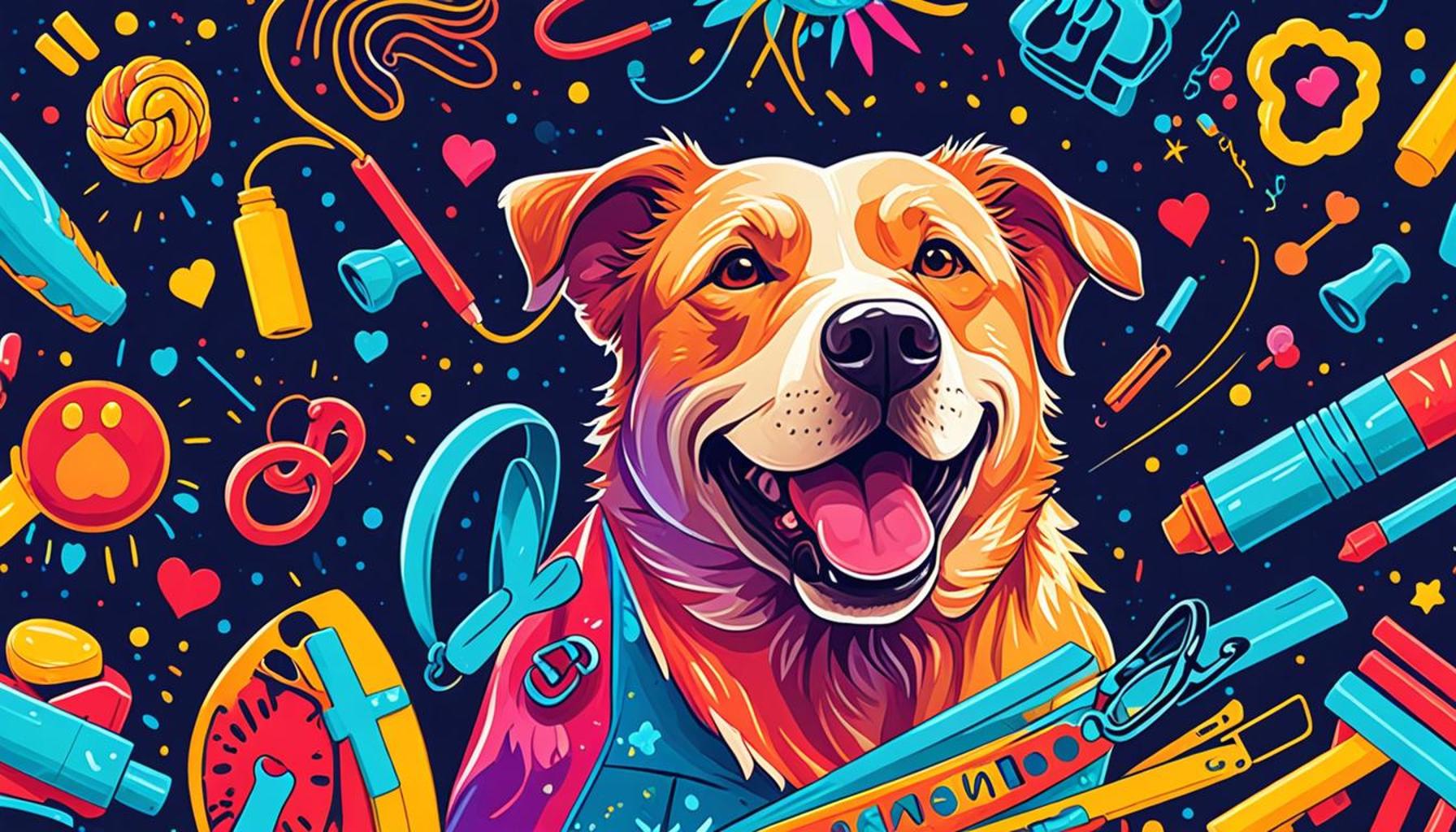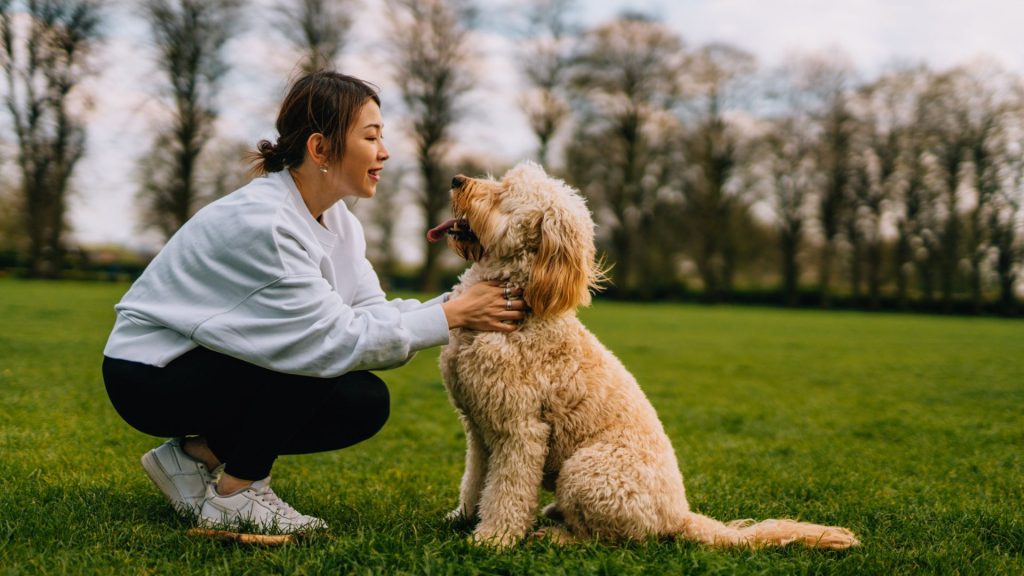The Importance of Positive Reinforcement in Dog Training Techniques

The Journey to a Well-Behaved Dog
Training a dog involves more than just commands; it’s about building a bond based on trust and understanding. Positive reinforcement stands out as a powerful technique that not only encourages desired behaviors but also strengthens the relationship between pet and owner. This approach is gaining traction among trainers and pet owners alike, thanks to its effectiveness and humane nature.
Why Positive Reinforcement Matters
As pet ownership continues to rise globally, understanding training methods becomes essential for fostering well-behaved companions. Key reasons to consider include:
- Encourages Learning: Rewards motivate dogs to repeat good behaviors.
- Reduces Fear: Positive techniques minimize anxiety and stress in dogs.
- Strengthens Bonds: Training together enhances the human-animal connection.
As we explore the topic, we will present the Top 5 Positive Reinforcement Techniques that every dog owner should know. Prepare to discover effective methods that not only train but also enrich the lives of your furry friends.
DISCOVER MORE: Click here for tips on hiking with your dog
Top 5: The Importance of Positive Reinforcement in Dog Training
In the realm of dog training, positive reinforcement has emerged as a leading method, proving essential for fostering a healthy relationship between pets and their owners. This approach, which emphasizes rewarding desirable behaviors rather than punishing undesirable actions, leads to effective training experiences. Positive reinforcement makes the learning process enjoyable for dogs while strengthening their relationship with humans. In this article, we will explore the top five reasons why positive reinforcement is crucial in dog training, ranking them from the least to the most important.

5. Enhances Bonding Between Dog and Owner
Using positive reinforcement not only trains a dog but significantly enhances the bond between the dog and its owner. When a dog receives a treat or praise for good behavior, it associates that positive experience with its owner. This strengthens their relationship and promotes trust. For instance, every time a dog is acknowledged for coming when called, it perceives its owner as a friend rather than an authority figure.
As a result, the more the owner implements positive reinforcement techniques, the closer the bond grows. Even simple rewards, such as verbal praise or petting, can foster a secure and loving environment. A well-bonded dog is typically more attentive and responsive during training sessions. In addition to obedience, this bond is crucial for creating a harmonious living situation where both the dog and owner benefit emotionally.
4. Increases Motivation to Learn
Motivation plays a pivotal role in a dog’s ability to learn new commands and tricks. Positive reinforcement significantly increases a dog’s motivation by making training sessions enjoyable and rewarding. When dogs know that good behavior leads to a desired outcome, such as treats or praise, they become more eager to participate in the training process. Consider a dog learning the “sit” command: the prospect of a treat makes it more willing to repeat the behavior.
This motivation not only results in faster learning but also makes dogs more receptive to new commands. A motivated dog is more likely to engage actively in training, making positive reinforcement a powerful tool for encouraging continuous learning. Unlike punishment-based methods, which can cause confusion and reluctance, this method encourages a proactive and joyful approach to training.
3. Promotes Good Behavior
One of the most significant advantages of positive reinforcement is that it encourages good behavior rather than focusing solely on correcting bad behaviors. By rewarding dogs for behaving appropriately, owners can cultivate desirable habits effectively. For instance, rewarding a dog for sitting quietly can prevent it from jumping or barking excessively. Over time, positive reinforcement can serve as an internal motivator for dogs to simply enjoy behaving well.
- Rewarding good behavior leads to:
- Increased chances of that behavior being repeated
- Reduced likelihood of undesirable habits
- Enhanced self-control in social situations
When the focus is on rewarding good actions, dogs begin to understand the behavior expectations more clearly, leading to better overall conduct both at home and outside. Apart from teaching obedience, it fosters an environment where dogs learn self-discipline and are less likely to engage in nuisance behaviors.
2. Reduces Fear and Anxiety
Training methods that rely on fear or punishment can create anxiety and stress in dogs. In contrast, positive reinforcement fosters a safe and encouraging environment, significantly minimizing fear and anxiety during training. When dogs feel secure, they are more willing to try new tasks and generalize their learning across different contexts.
Dogs that are trained using positive reinforcement are often calmer and less likely to react negatively to challenges or changes in their environment. This leads to well-adjusted pets that can handle various situations with confidence. In a world filled with unexpected stimuli, a dog trained positively learns to navigate without fear, reducing stress for both the pet and its family.
1. Long-lasting Results and Lifelong Learning
Above all, the most compelling reason for employing positive reinforcement in dog training is that it leads to long-lasting results. When dogs learn through rewarding experiences, they are more likely to remember the behaviors for life, making it easier for them to retain commands and tricks. This form of training promotes lifelong learning, encouraging dogs to be adaptable and continually trainable well into their adult lives.
Additionally, positive reinforcement creates a foundation for ongoing communication between the dog and owner. With strong reinforcement principles, owners can guide their dogs through various life stages, leading to continued success in training. As situations change, such as the introduction of a new family member or moving to a new home, dogs equipped with positive learning experiences adapt more readily.
To conclude, positive reinforcement is an integral factor in effective dog training practices. The benefits span beyond just the implementation of commands, as they contribute to a harmonious relationship and a well-behaved canine companion. By utilizing this approach, pet owners can not only achieve better training outcomes but also foster an environment where their dogs thrive emotionally and mentally.
Incorporating positive reinforcement into dog training practices aligns with a greater understanding of canine psychology and humane treatment. As dog owners seek increasingly effective and ethical training methods, this approach promises not just a cooperative pet, but a happier one. Given these insights, owners are encouraged to delve deeper into the principles of positive reinforcement, ensuring their training practices are both current and compassionate.
| Category | Key Features |
|---|---|
| Enhanced Learning | Using positive reinforcement promotes a faster acquisition of skills as dogs are more likely to repeat behaviors that are rewarded. |
| Strengthened Bond | Rewarding good behavior helps develop a trusting relationship between dog and owner, increasing overall training effectiveness. |
| Reduction of Anxiety | Positive reinforcement creates a comfortable training environment, reducing fear and anxiety, which can impede a dog’s ability to learn. |
| Behavioral Modification | This method effectively addresses and modifies undesirable behaviors without creating aggression or fear in dogs. |
Implementing positive reinforcement techniques in dog training can significantly enhance the training experience for both the owner and the dog. This method not only rewards good behavior but also promotes a healthier and more effective communication style. Moreover, dogs trained with such techniques often showcase improved social skills, allowing them to interact better with both humans and other animals. The value of establishing a trusting relationship cannot be understated; it forms the foundation for ongoing training and discipline, making the learning process enjoyable rather than a chore. Research has shown that dogs trained with positive reinforcement tend to be more engaged and eager to learn, reflecting on their motivation levels and overall well-being.Furthermore, by focusing on immediate rewards such as treats, praise, or play, dog owners can help their pets associate specific behaviors with positive outcomes. This association is crucial when attempting to instill commands or modify existing behaviors. Over time, the consistency of this approach will lead to a well-behaved companion who responds to their owner’s cues naturally and eagerly. It is interesting to note that these training strategies not only benefit the dogs but also enhance the owner’s experience, as training becomes a bonding activity filled with joy and cooperation. By choosing to implement positive reinforcement in their training regimen, owners are setting the stage for a fulfilling and harmonious relationship with their dogs.
DON’T MISS: Click here for essential tips to keep your dog safe and happy at outdoor parties!
Frequently Asked Questions about Positive Reinforcement in Dog Training
What is positive reinforcement in dog training?
Positive reinforcement in dog training involves rewarding a dog for exhibiting desired behaviors. This method focuses on encouraging and increasing the likelihood of repeating these behaviors by offering something the dog finds valuable, such as treats, praise, or play. Unlike other training methods, positive reinforcement does not involve punishment, which helps to foster a stronger bond between the dog and the owner.
Why is positive reinforcement considered effective?
The effectiveness of positive reinforcement lies in its foundation of motivation rather than fear. When a dog learns that good behavior leads to rewards, it becomes more enthusiastic about learning and following commands. Research indicates that dogs trained with positive reinforcement learn faster and retain more of what they learn, making this method both efficient and humane. Additionally, it enhances the dog’s confidence and reduces stress during training sessions.
Can positive reinforcement address all behavior issues?
Positive reinforcement is highly versatile and can effectively address many behavior issues, from basic obedience to more complex behavioral problems. However, certain cases may require the expertise of a professional trainer, particularly for aggressive behavior. In such instances, a combination of techniques, still focused on positivity, may be necessary. It’s important to understand that consistency and patience are key components when addressing behavior issues.
How quickly can results be expected with positive reinforcement?
The timeline for seeing results with positive reinforcement training varies depending on several factors, including the dog’s age, personality, and the consistency of the training. Puppies may learn basic commands within a few days or weeks, while adult dogs might take a bit longer. Complex behaviors or problem-solving tasks can take significantly more time. Patience and consistency are essential, and maintaining a regular training schedule will help solidify the desired behaviors.
What rewards work best for positive reinforcement?
The best rewards for positive reinforcement are those that the dog finds most motivating. For many dogs, treats are highly effective. However, others may respond better to a favorite toy or verbal praise. It’s important to tailor the rewards to the individual dog’s preferences and adjust them as necessary to maintain the dog’s interest and enthusiasm.
DISCOVER MORE: Click here for essential tips
Conclusion: Understanding the Power of Positive Reinforcement in Dog Training
The journey into the world of dog training has highlighted a transformative approach: the power and effectiveness of positive reinforcement. This method, which emphasizes rewarding good behavior rather than punishing bad behavior, stands as a cornerstone for fostering a harmonious relationship between dogs and their owners. It is a method that not only improves obedience but also strengthens the bond and mutual trust.
By employing techniques such as offering treats, verbal praise, or playtime, dog owners can effectively communicate their expectations without causing fear or anxiety in their pets. The psychological benefits are substantial, as dogs trained with positive reinforcement tend to be more confident, willing to learn, and eager to please. Unlike punitive measures, positive reinforcement breeds a learning environment filled with excitement and curiosity.
Key Takeaways
- Encourages Voluntary Behavior: Dogs respond better and faster when their behaviors are reinforced positively.
- Builds Stronger Bonds: The mutual understanding and trust built through positive methods enhance the human-animal relationship.
- Adaptability: This method is versatile and can be tailored to suit individual dog personalities and temperaments.
- Long-term Benefits: Positive reinforcement fosters lifelong learning and adaptation to new commands and environments.
- Promotes Mental Well-being: A stress-free training environment contributes to the overall mental health of dogs.
Adopting a positive reinforcement approach prepares a foundation for a well-behaved, content, and fulfilled canine companion. It is an invitation for pet owners to explore and understand their pet’s unique needs and characteristics, ultimately leading to a more rewarding companionship. As dog owners increasingly seek to better their training methods, the importance of positive reinforcement continues to reveal its significant role in nurturing happier, healthier dogs.


